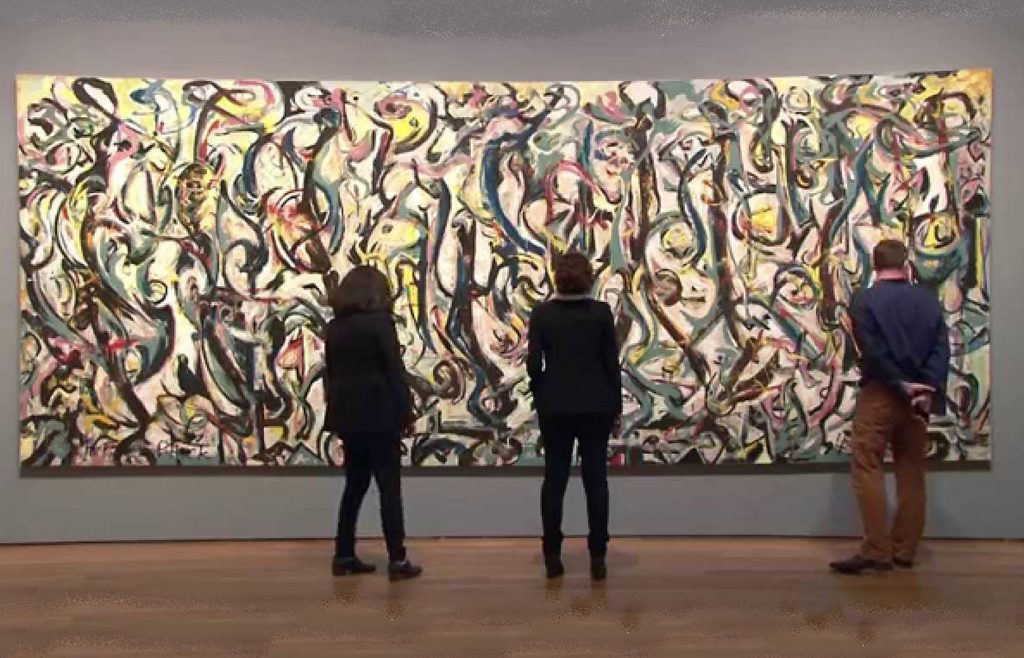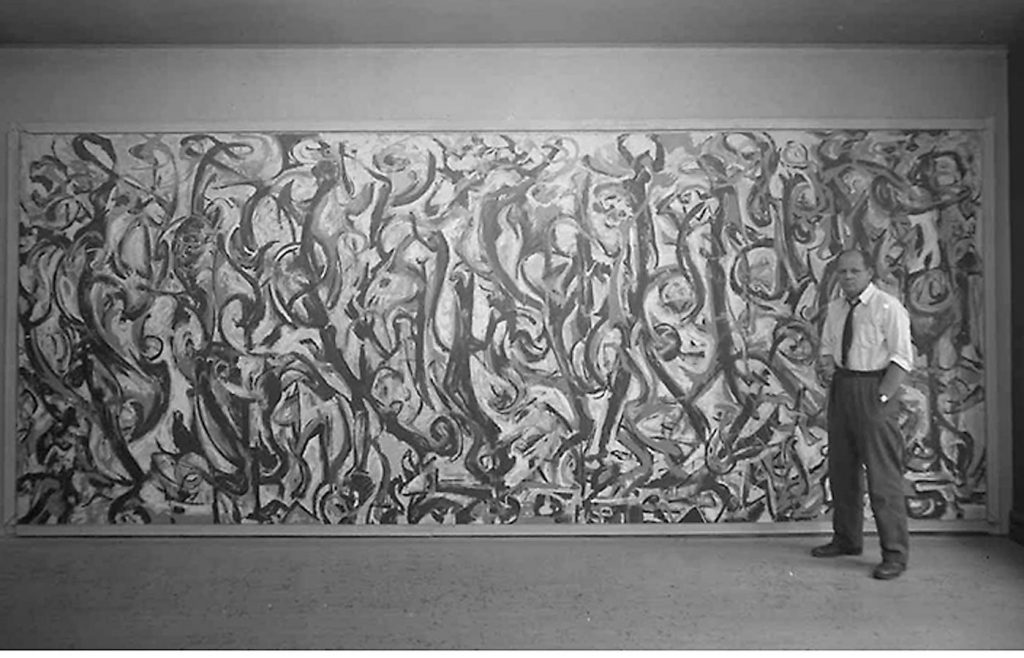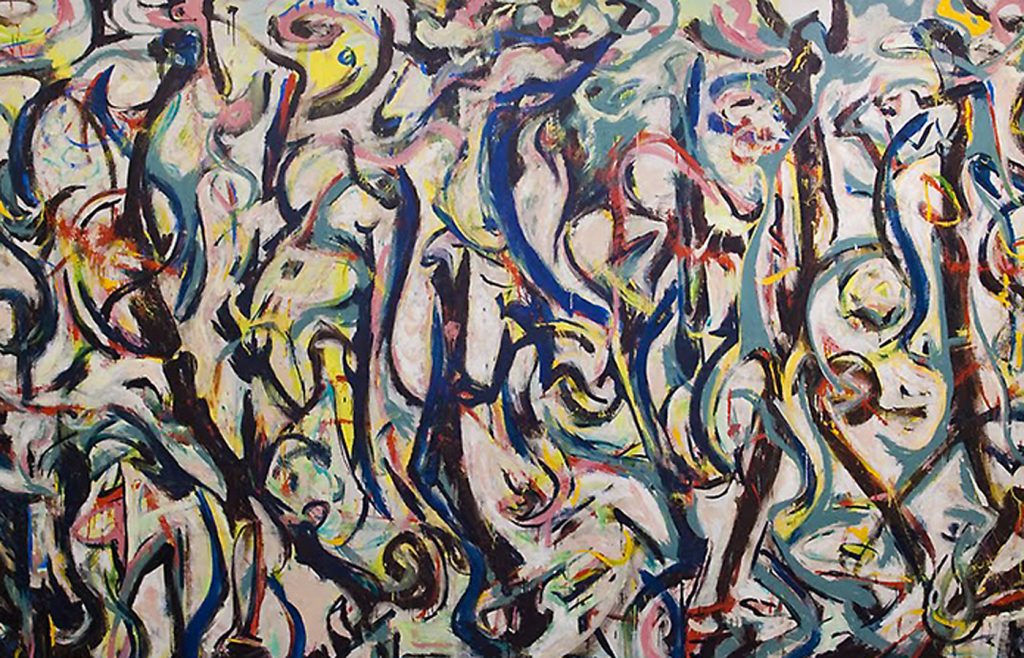
Follow the journey of Iowa City’s iconic Jackson Pollock painting in the Emmy Award-winning documentary Jackson Pollock’s Mural: The Story of a Modern Masterpiece. Directed by Iowa City filmmaker Kevin Kelley, the film explores the myths surrounding a work that influenced so many American artists and changed the landscape of modern American painting.
In 1943, up-and-coming artist Jackson Pollock created the painting for art patron Peggy Guggenheim to be hung in her New York City townhouse. It was nearly twenty feet in length and eight feet high. When art critic Clement Greenberg saw it, he said, “I took one look at [Mural] . . . and I knew Jackson was the greatest painter this country had produced.”
Eight years later, Guggenheim donated it to the University of Iowa, and it was installed in the new University Art Museum in 1969. When the flood of 2008 forced the removal of all the museum’s artworks, Mural became homeless. Talk of selling the valuable artwork (now valued at $150 million) began circulating, upsetting a number of Iowans, including Kelley, who first saw the painting as a student in the 1970s.
“I would go to the museum and that would be the big highlight,” he says. “To me, it was like our Mona Lisa. . . . For that to go away would be really, really upsetting, so I thought, maybe I can make a film about this somehow.” As he delved into research and got more excited about the possibility, “one thing led to another and we started to make the film.”

Kelley values Mural’s role in the history of American art, explaining that it basically ignited what would later be called Abstract Expressionism. “Not only is it a wonderful painting that’s famous in our art collection,” Kelley says, “it’s historic.” It brought the Abstract Expressionist movement to the forefront and gave America a brand-new style of painting. Before that, he says, “it was always based on European art. That painting changed everything—we have our own art now. It’s like blues and jazz—that’s America, that’s what this painting symbolizes, and it’s in Iowa City, Iowa. So that’s why it’s so important.”
The film follows the painting from its one-year conservation at the Getty Museum in Los Angeles to its exhibit for the Venice Biennale at the Peggy Guggenheim Collection. Kelley is grateful for the time he spent with the Getty conservators. “People don’t really understand how important those people are,” he says. “They’re the ones who keep our art alive and in the museums so the pieces don’t disintegrate. It was nice to meet the Getty people and see their work.”

The iconic painting is currently traveling the country, and goes on view at the National Gallery of Art on November 19, 2017. After two more U.S. destinations, it will return to Iowa City sometime in 2020 for the opening of the new University of Iowa Museum of Art.
So far, the film has screened in five national and international film festivals and aired on 23 PBS stations. “The icing on the cake was winning the Mid-America Emmy Award in September,” Kelley says. “We were really happy about that.”
In December, after 30 years as a filmmaker at the University of Iowa, Kelley is retiring. “I’ll be turning over the reins to the new filmmakers here,” he says. In the meantime, he and his wife have started a new nonprofit to continue making films.
